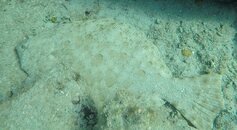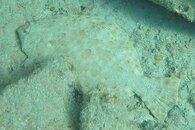I photographed this large (over 30cm) flounder last Friday, parked at a shallow (<3 m deep) rubble/debris hardbottom site in Palm Beach County (southern Florida, east coast).
The body spot patterns are very faint, and I am currently stuck between (3) possible species options.
1. Tropical Flounder (Paralichthys tropicus)
2. Southern Flounder (Paralichthys lethostigma)
3. Gulf Flounder (Paralichthys albigutta)
Any assistance would be much appreciated.
The body spot patterns are very faint, and I am currently stuck between (3) possible species options.
1. Tropical Flounder (Paralichthys tropicus)
2. Southern Flounder (Paralichthys lethostigma)
3. Gulf Flounder (Paralichthys albigutta)
Any assistance would be much appreciated.






